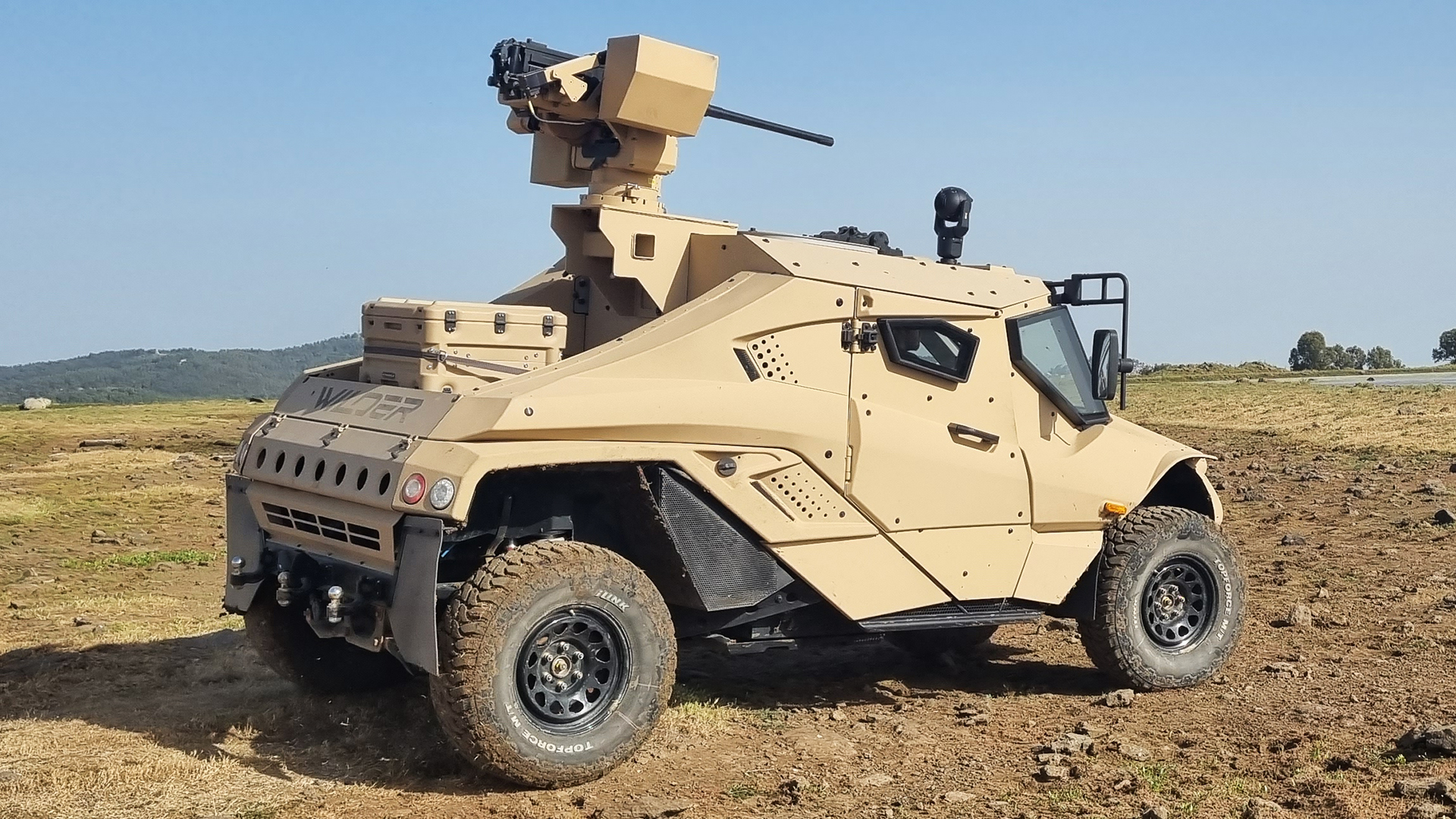It’s a little hard to fathom the path that evolution took when you park an Oshkosh JLTV next to a 1941 Willys Jeep. Both do more or less the same job — transport troops and equipment around the battlefield — but one is small, agile, cheap, and simple while the other is an 11-ton behemoth that looks more akin to a heavy truck than a featherweight battle transport.
Plasan wants to change that. The Israeli defense company doesn’t exactly want to turn back the evolutionary clock, but it wants to try and create an armored fighting vehicle that’s closer in spirit to the light and simple Jeep than it is to the heavy and ponderous JLTV or Humvee. For inspiration for Plasan’s new Wilder 4X4 battlefield vehicle, Director of Design Nir Kahn turned to some sources that you might not be expecting.
“In many ways, the Wilder is built like a Dakar racer,” Kahn tells The War Zone over a Zoom link. Behind him on the wall of his studio can be seen photos and sketches of other vehicles. Not military vehicles, but gorgeous sports cars such as the original Ferrari Dino 246 GT and Mazda’s more recent RX-Vision concept car. There’s also one of Gerry McGovern’s chunky Judge Dredd Land Rover concepts in the mix. Neither Kahn nor Plasan, then, are exactly what you expect when it comes to military vehicle design.

“Of course, a Dakar racer uses a tube frame,” says Kahn, “but we don’t. We use a kitted hull, which is a bolted-and-bonded monocoque. With our designs, armor is a fundamental part of the vehicle; this isn’t a frame buggy that has had armor panels stuck to it. So the central structure of the Wilder is an armored safety cell, with front and rear subframes. It really is almost like a racing car.” The Wilder’s crew compartment gets Stanag 4569 Level 2 protection for up to 7.62mm armor-piercing rounds.
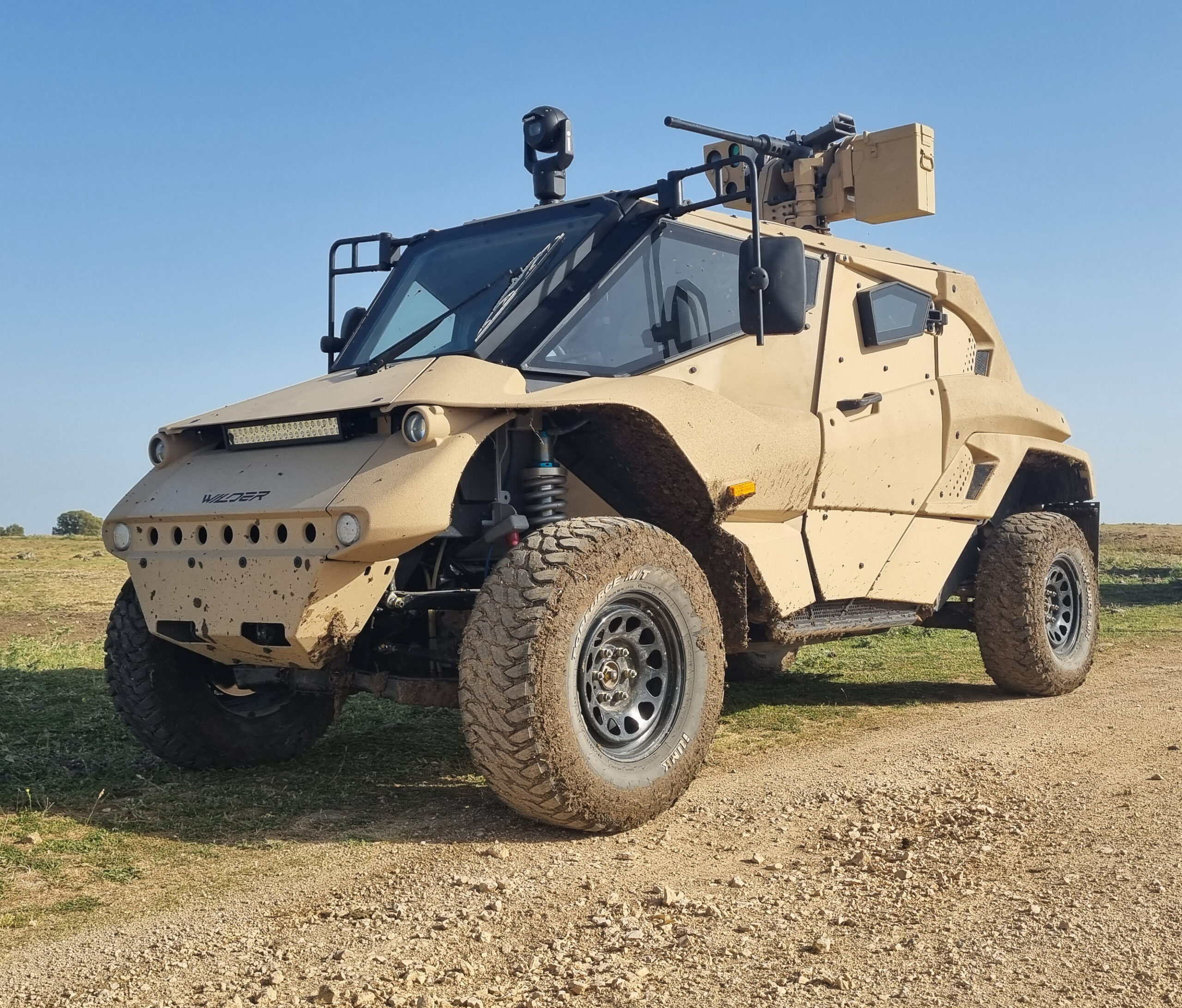
There’s more inspiration from the racing car world in the seating layout, because the driver sits up front and center, just like the legendary Gordon Murray’s McLaren F1 supercar. Kahn chuckles when we suggest he may have wanted to copy Murray’s seating layout because he’s a racing fan, but there are valid reasons for choosing a star-shaped seating setup.
“I do get my inspiration from places like that,” Kahn admits. “But it’s not about changing things for change’s sake, it’s about not ruling things out, it’s thinking maybe there’s another way of doing this. So with the central driving position, there’s a benefit in that it doesn’t matter where the vehicle is deployed. So U.S. customers might want left-hand drive vehicles, or U.K. buyers might want right-hand drive, but then those vehicles are going to be deployed overseas, so it might have been better to have the wheel on the other side. Or, as with the Wilder, just put the driver in the middle and then you don’t have to think about that.”

There’s a visibility benefit too, and not just for the driver. “The driver is sitting way forwards, and there’s no bonnet in front of him, so there’s a panoramic view. That’s very different from what you get in the bigger, heavier military vehicles. There’s also a benefit for the other guys in the cabin, because you have two seats on the driver’s shoulders, and the people sitting there also have a good, clean view forward. So normally in these vehicles, you’d have a driver and a commander with a nice clear view forwards and the commander’s shouting instructions, the guy sitting behind, you really can’t see anything at all. We’ve now got three people who all have that good situational awareness.”
The fourth occupant of the Wilder gets the short straw and sits directly behind the driver, but then that person is likely going to have their focus on a screen or comms gear anyway, so it’s not too much of a penalty. The diamond-shaped seating layout also means that the Wilder can make do with just two doors, yet it’s still easy to get the crew in and out in a hurry.
“It also means that we can move the flatbed further forward,” says Kahn. “The Wilder is about the same size as a Jeep Wrangler or an old-shape Land Rover Defender, but we’ve got a flatbed that’s 1.3 meters by 1.3 meters [4.3 feet by 4.3 feet], which is big enough for a standard NATO pallet. You can load the Wilder up with 1,763 pounds of cargo.”
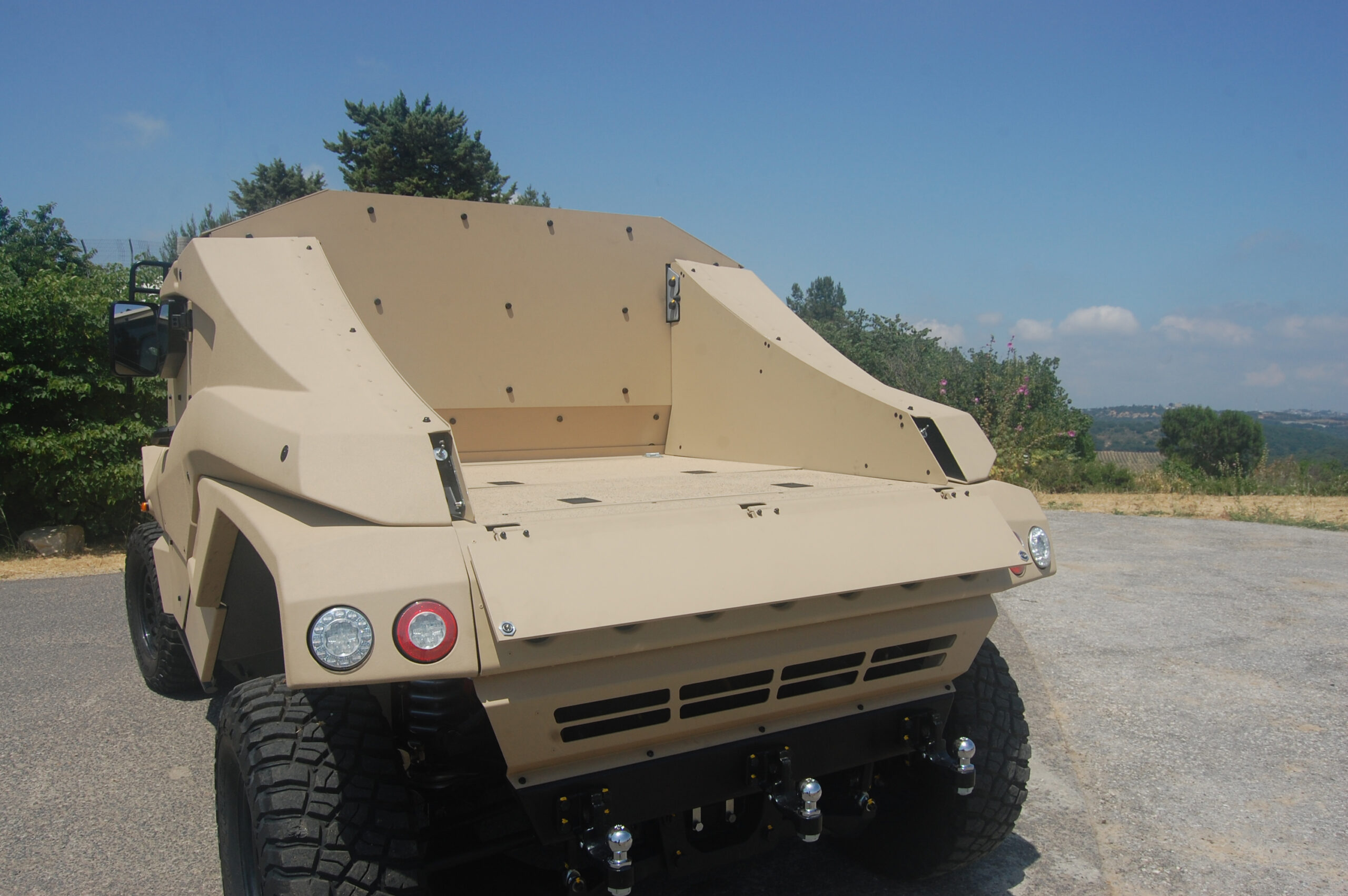
The Wilder is mid-engined, with a 2.0-liter turbo-diesel four-cylinder mill driving all four wheels through an eight-speed automatic gearbox. Even the powertrain installation is clever, as Plasan has turned the differential the ‘wrong’ way around, which along with the fitting of extra-long driveshafts gives a massive 14.5 inches of wheel travel and lots of ground clearance, but without the extra weight and expense of portal axles. The whole vehicle is comparatively trim at roughly 8,000 pounds.
Plasan’s idea is that the Wilder is the ultimate all-round military vehicle. “It’s not an esoteric, specialist vehicle,” says Kahn. “It’s not aimed purely at special forces who are doing weird things with it. It can be a regular daily patrol vehicle. It can be a combat vehicle, it can be all kinds of different things.”
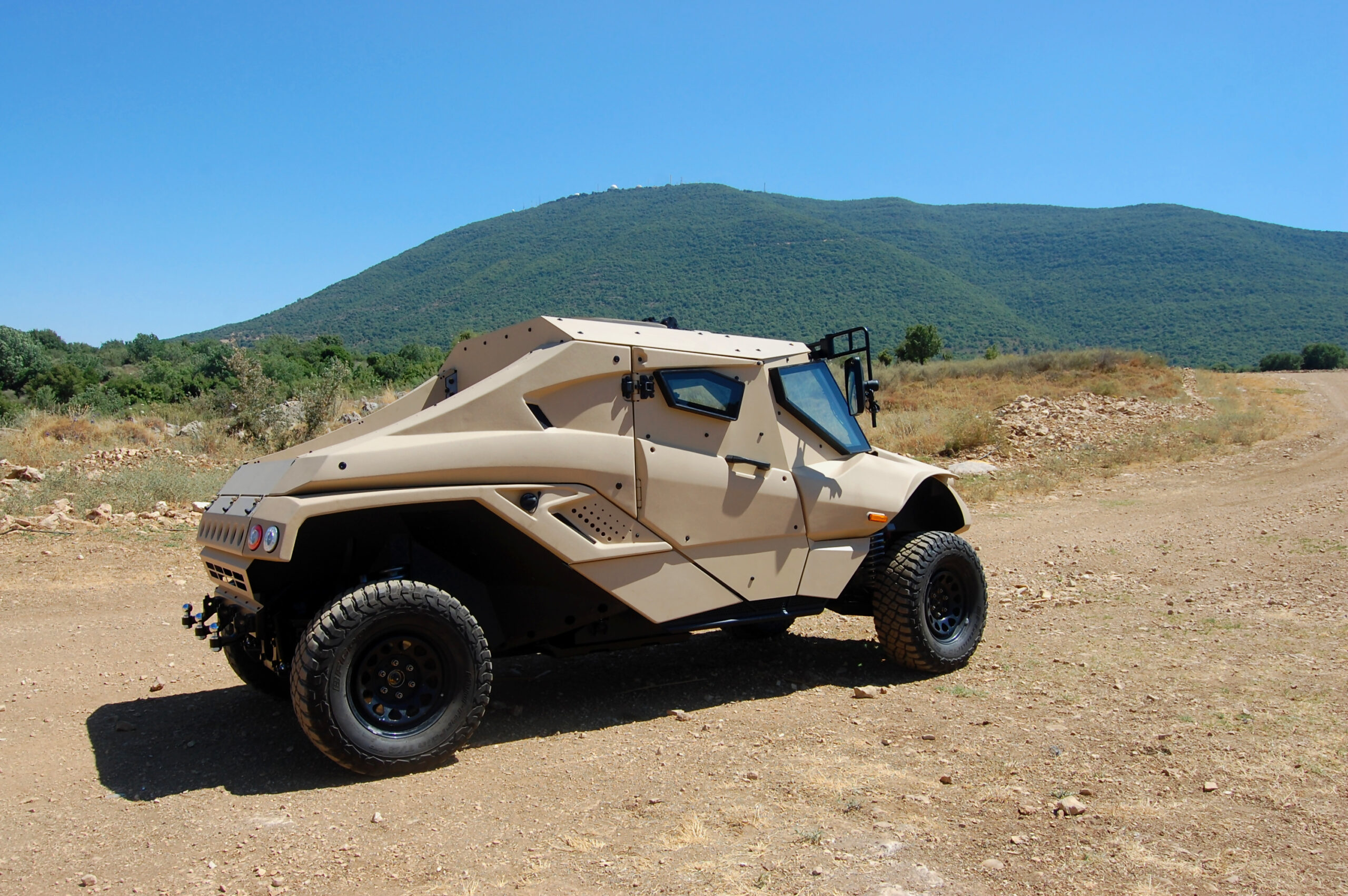
It also has a few tricks up its sleeves, such as the ability to be fully remote-controlled. Again, Kahn chuckles when I suggest that he’s taking inspiration from R/C toys here… “Yes, it’s basically a big Tamiya kit,” he admits with a smile. “You can dismount from the Wilder, and send it on ahead as a remote recce vehicle. The weapon on the roof can also be remote-controlled. Or you can send it back to base, either for supplies or as a remote-controlled casevac vehicle.” The Wilder’s fully equipped with integrated drive-by-wire capability and associated cameras and sensors, so it’s ready for autonomous operations too.

The Wilder is also at the forefront of the electrification of military operations because it’s been designed to work with Plasan’s new ) electric trailer. The ATeMM gets a 37-kilowatt-hour battery pack, and a 142-kilowatt electric motor to drive its two wheels. Attached to the back of the Wilder, it not only adds an extra 2,490 pounds of cargo-carrying ability, but it also turns the Wilder into a 6×6 hybrid. There’s eventually the potential to add another ATeMM to the train, turning it into an 8×8 hybrid.

“Efficiency is fairly low down the priority list when it comes to the military going electric,” says Kahn. “But power is hugely necessary — they are carrying systems that are using a lot of electricity, and already really the diesel engine is becoming a generator. A small proportion of its power is used to move the vehicle, and a much larger proportion is used to generate the electricity that’s powering all the systems.
The idea behind ATeMM is that you can hitch it up to a tow vehicle — it’s been designed to be native to the Wilder but it will work with other vehicles — and bring it out to a point where you can leave it. It’ll arrive fully charged on-site, because it’ll charge on the way from regenerative braking, and then you can use it as a docking and charging station for drones or whatever other electrical gear you need to power. You can unhitch it and strategically leave ATeMMs around as charging points. Or you can link two, three, or four of them together and use them as autonomous or remote-controlled self-propelled trailers.” Given how effective we’ve seen small, light drones and silent electric motorbikes can be in recent military operations, setups such as this could be a game-changer.
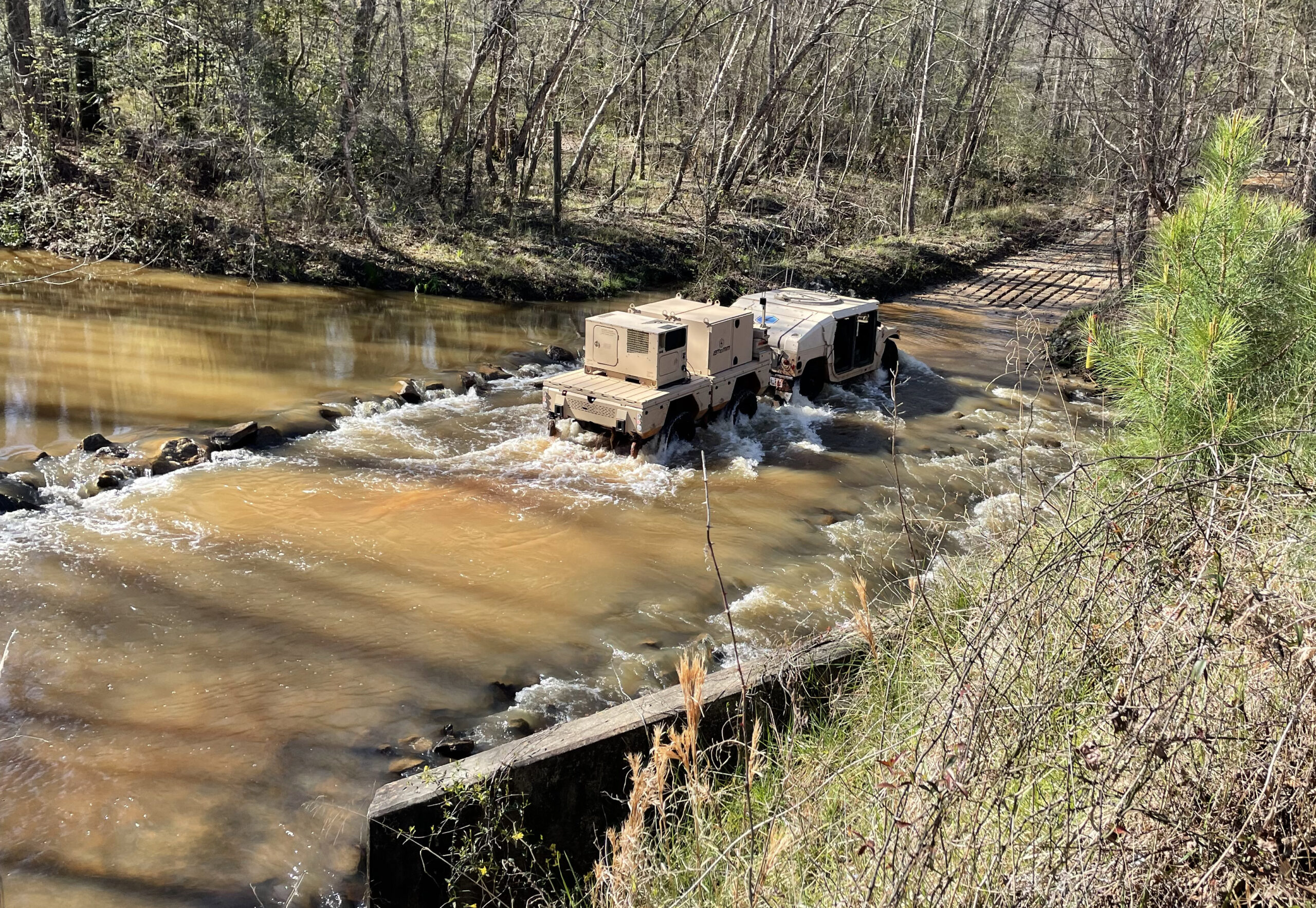
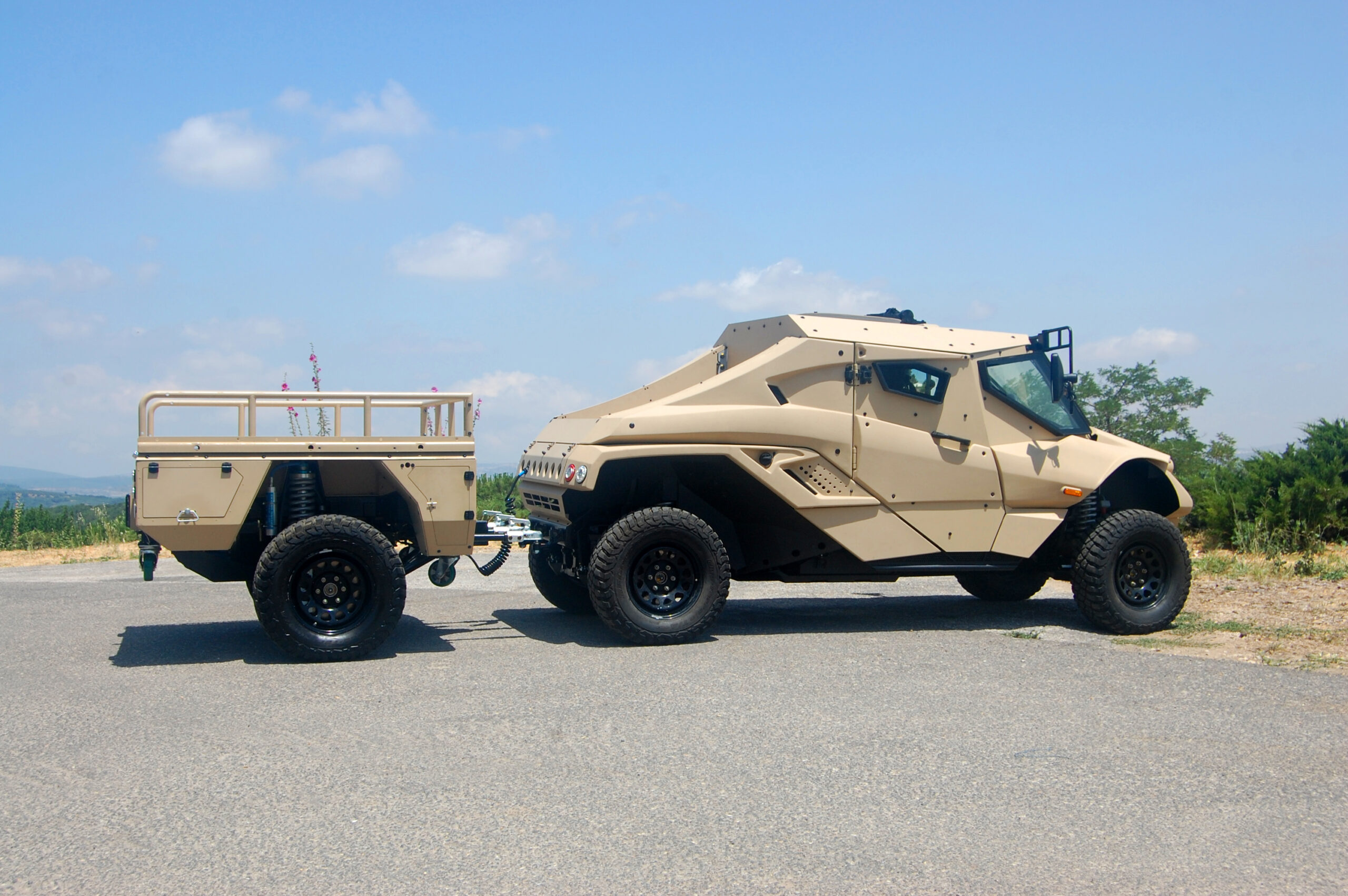
How much for all of this? Plasan isn’t saying just now, but Kahn alludes to a price tag for the Wilder coming in at around $200,000-$250,000 apiece. “It’s not going to be a dirt-cheap vehicle. It’s not going to be cost-competitive with a Toyota pickup with some armor added to it. But it does things that all those cannot do. And of course, when combined with ATeMM it can start to do things that you need a much more expensive vehicle to do. When it’s combined with that you’ve got a hybrid-electric 8×8 with lots of power and payload, and the ATeMM can be carrying really quite a large weapon. It starts to become something that replaces a $3-million IFV.”
Plasan will give the Wilder, and the ATeMM, their global debuts at the Eurosatory defense show now taking place in Paris. The company isn’t prepared to talk about who’s ordering it, but does say that the Wilder is not a test-the-water concept — there is interest, and it’s a finished and ready-to-go vehicle. There is also the possibility of Plasan tying up with local contractors to build the Wilder under license.
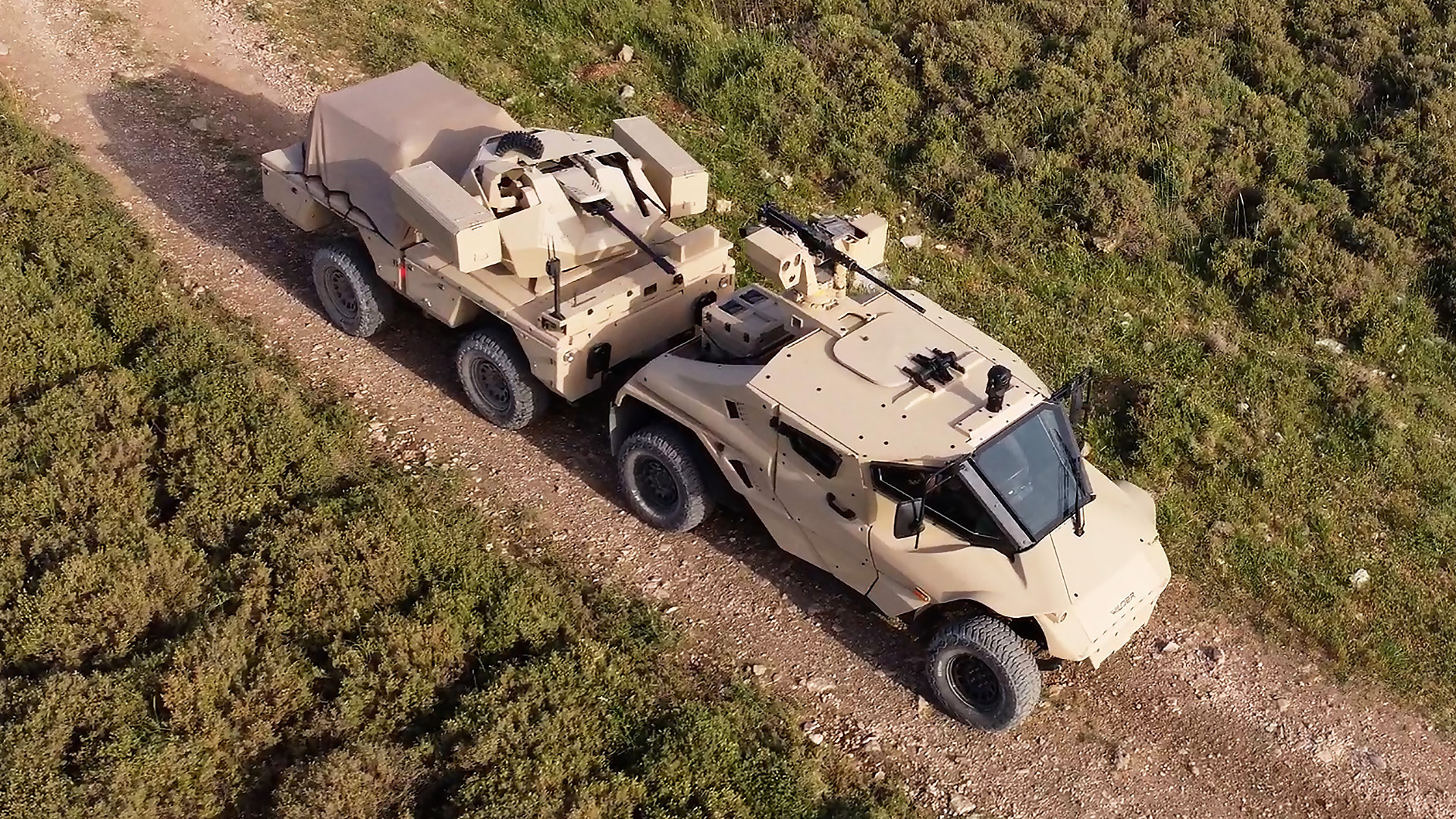
Needless to say, Kahn would love to make a civilian version of the Wilder, but it’s incredibly hard to make the sums add up: “You just you get into this spiral of the vehicle becoming more and more are expensive, and the potential sales numbers getting lower and lower and lower. Which is why people like Gordon Murray sell 100 vehicles for $3-million each. Because you can create a business case around that, that’s much stronger than the one where you build 1,000 vehicles at $60,000. I would love to make a civilian version of it. If somebody can make the math work for me so we can make the commercial case, I’m all over it.”
Contact the editor: Tyler@thedrive.com
